Pet Supplies
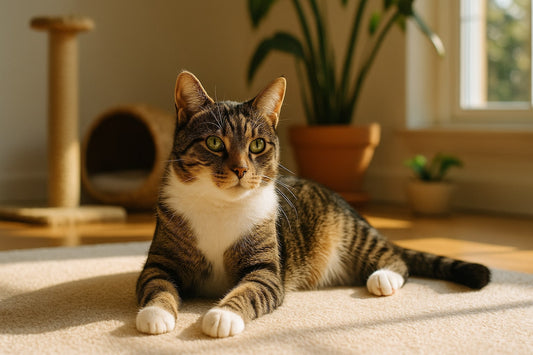
The Ultimate Guide to Caring for Your Domestic ...
In the landscape of feline companionship, few cats are as widespread, loved, and yet as misunderstood as the Domestic Shorthair. Often dubbed “moggies” in Australia, these cats grace more homes,...
The Ultimate Guide to Caring for Your Domestic ...
In the landscape of feline companionship, few cats are as widespread, loved, and yet as misunderstood as the Domestic Shorthair. Often dubbed “moggies” in Australia, these cats grace more homes, shelters, and neighbourhoods than any pedigree breed — yet they seldom receive the spotlight they deserve.
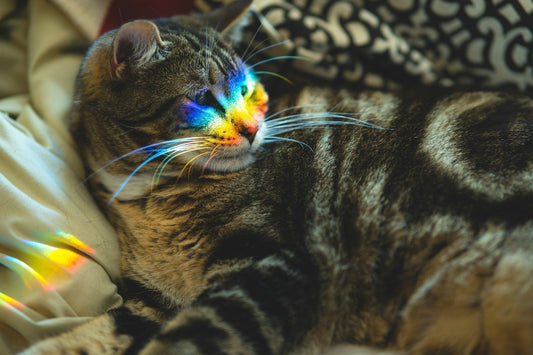
Laser Pointer Toys for Cats: Benefits, Risks, a...
Laser pointers keep indoor cats healthy, keeping them active, alert and mentally sharp by enticing them to chase an unpredictable prey. The quick-moving dot entertains and stimulates your cat, alleviating...
Laser Pointer Toys for Cats: Benefits, Risks, a...
Laser pointers keep indoor cats healthy, keeping them active, alert and mentally sharp by enticing them to chase an unpredictable prey. The quick-moving dot entertains and stimulates your cat, alleviating boredom and helping prevent bad behavior in your home. According to veterinarians across Australia, brief laser play sessions are an excellent way for indoor cats to receive the exercise they require. Many owners likely only have the option to use a laser pointer in small apartments or houses with limited safe outdoor access. Read on to learn how laser play benefits you and your cat and how to do it safely.
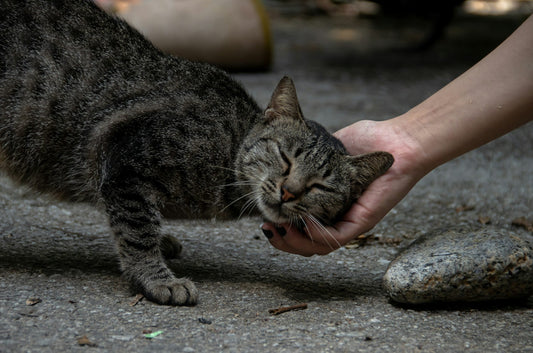
What Does the RSPCA Do With Stray Cats? Inside ...
In Australia, the sight of a lone cat wandering the streets, skimming bins for scraps or hiding in alleyways, is sadly not uncommon. While some of these cats may be...
What Does the RSPCA Do With Stray Cats? Inside ...
In Australia, the sight of a lone cat wandering the streets, skimming bins for scraps or hiding in alleyways, is sadly not uncommon. While some of these cats may be lost pets, many are truly stray—unowned, unprotected, and often vulnerable to harsh conditions or mistreatment. These animals exist in the space between domesticity and wilderness, and without intervention, their numbers and suffering can escalate rapidly.
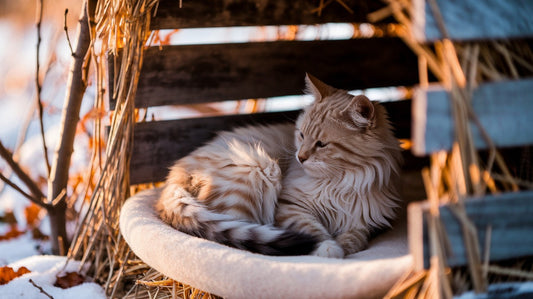
How Heated Beds Can Help Feral Cats Survive Winter
Heated beds offer a convenient and secure location for feral cats to escape the cold temperatures. They provide these animals a much-needed safe, warm place to shelter during harsh winter...
How Heated Beds Can Help Feral Cats Survive Winter
Heated beds offer a convenient and secure location for feral cats to escape the cold temperatures. They provide these animals a much-needed safe, warm place to shelter during harsh winter temperatures. In Australia, cold nights and wet weather expose stray cats to the dangers of chill and diseases like hypothermia. By making heated beds available we can prevent severe health complications and give these cats much greater comfort. For most feral cats, it can be difficult to find a dry, sheltered spot. A heated bed can make a world of difference to outdoor shelters, even in southern states where frost occurs at times.
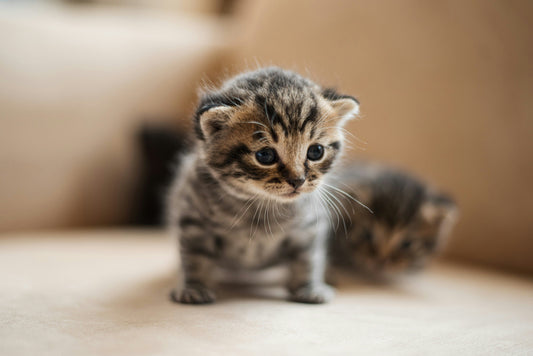
What Age Can Kittens Leave Their Mother? Essent...
Deciding when a kitten can leave its mother is crucial for its lifelong health and behavior. This detailed guide explains why waiting until 12 to 14 weeks is ideal, covering...
What Age Can Kittens Leave Their Mother? Essent...
Deciding when a kitten can leave its mother is crucial for its lifelong health and behavior. This detailed guide explains why waiting until 12 to 14 weeks is ideal, covering key developmental stages, health risks of early separation, and Australian legal guidelines. Featuring expert quotes and backed by scientific studies, the article helps Australian cat lovers make informed, compassionate decisions when adopting a kitten.

What Is a Time-Out Cat Punishment? A Humane Gui...
This article explores the concept of time-out punishment for cats as a humane, non-violent method to correct unwanted behaviors like aggression or destructive scratching. Drawing from historical operant conditioning theories...
What Is a Time-Out Cat Punishment? A Humane Gui...
This article explores the concept of time-out punishment for cats as a humane, non-violent method to correct unwanted behaviors like aggression or destructive scratching. Drawing from historical operant conditioning theories and current Australian pet care standards, it provides a detailed guide on when and how to use time-outs effectively. The piece covers step-by-step instructions, pros and cons, common mistakes, and real-life examples from Australian pet owners. Featuring expert quotes and practical insights, the article empowers cat owners to foster better behavior without compromising trust or emotional wellbeing. A must-read for anyone seeking compassionate, expert-backed strategies for managing feline behavior.
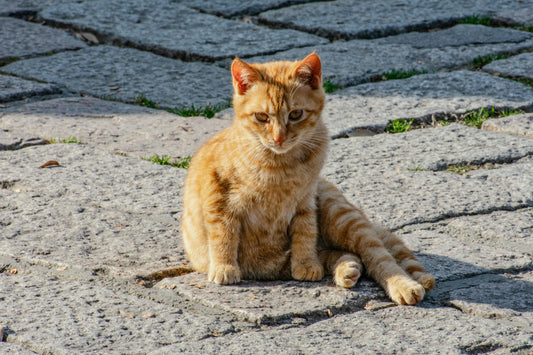
Is It Cruel to Leave a Stray Cat? What Every An...
This article explores the ethical, practical, and emotional question of whether it's cruel to leave a stray cat without intervention. Backed by historical context and current Australian statistics, it reveals...
Is It Cruel to Leave a Stray Cat? What Every An...
This article explores the ethical, practical, and emotional question of whether it's cruel to leave a stray cat without intervention. Backed by historical context and current Australian statistics, it reveals that while stray cats may appear self-sufficient, they often face severe risks including disease, starvation, injury, and a significantly shortened lifespan. It distinguishes between true strays, lost pets, outdoor cats, and ferals—highlighting the importance of correctly identifying a cat’s status before taking action. The article encourages responsible alternatives to abandonment, such as supporting TNR (Trap-Neuter-Return) programs, providing temporary shelter, donating to rescue groups, and adopting when possible. Rather than presenting a one-size-fits-all answer, it offers compassionate, well-informed options that pet lovers can take depending on their resources, local laws, and the cat’s condition. By offering actionable steps, expert quotes, and humane product recommendations, the article aims to empower readers to make thoughtful decisions that reflect both kindness and practicality. Ultimately, it underscores that doing nothing is often the cruelest option—and even small actions can change a stray cat’s life for the better.
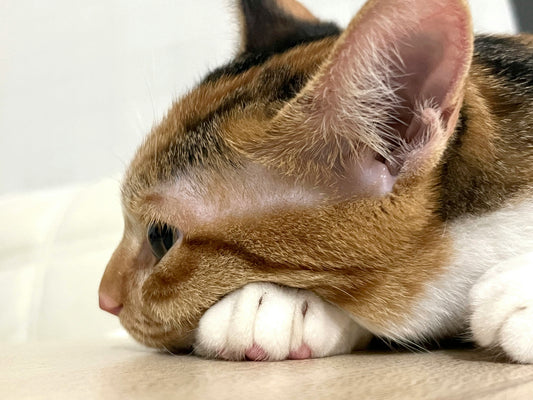
What Is Ear Tipping on Cats? The Humane Way to ...
Ear tipping is a humane, internationally recognized practice used to identify stray and feral cats that have been spayed or neutered as part of TNR (Trap-Neuter-Return) programs. During this quick...
What Is Ear Tipping on Cats? The Humane Way to ...
Ear tipping is a humane, internationally recognized practice used to identify stray and feral cats that have been spayed or neutered as part of TNR (Trap-Neuter-Return) programs. During this quick procedure, a small portion of the cat's left ear is surgically removed under anesthesia, making it easy for rescuers and animal control to know the cat has already been sterilized. The article explores the history, benefits, and myths surrounding ear tipping, emphasizing how it reduces unnecessary retrapping, supports community cat welfare, and helps combat overpopulation and euthanasia. With data-backed insights, quotes from veterinary experts, and real-world statistics, the article highlights ear tipping’s crucial role in creating healthier, more stable feral cat colonies in Australia and beyond. It also provides pet owners with practical tips, ethical considerations, and ways to support or get involved in TNR initiatives, all written in a clear and compassionate tone that’s easy to understand for a wide audience.
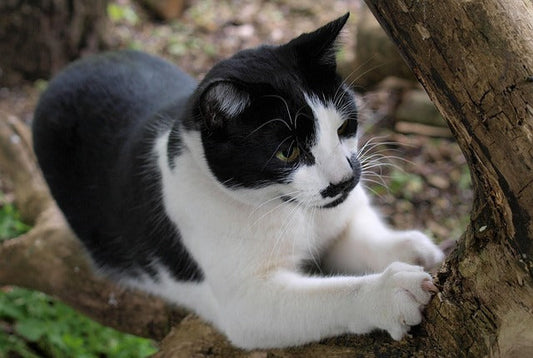
Should My Cat Wear a Cone All Day? Vet-Backed A...
Should My Cat Wear a Cone All Day? Vet-Backed Advice for Faster Healing & Comfort explores whether 24/7 cone usage is best for feline recovery. Backed by veterinary guidance and...
Should My Cat Wear a Cone All Day? Vet-Backed A...
Should My Cat Wear a Cone All Day? Vet-Backed Advice for Faster Healing & Comfort explores whether 24/7 cone usage is best for feline recovery. Backed by veterinary guidance and behavioral insights, this in-depth article covers when constant cone use is necessary, the risks of prolonged wear, and how to strike a balance between protection and comfort. You'll learn about modern alternatives to traditional cones, how to manage your cat’s stress, and what signs suggest the cone may be causing more harm than good. With historical context, practical tips, product recommendations, and frequently asked questions, this guide offers a complete roadmap for post-op and injury care tailored to your cat’s well-being.
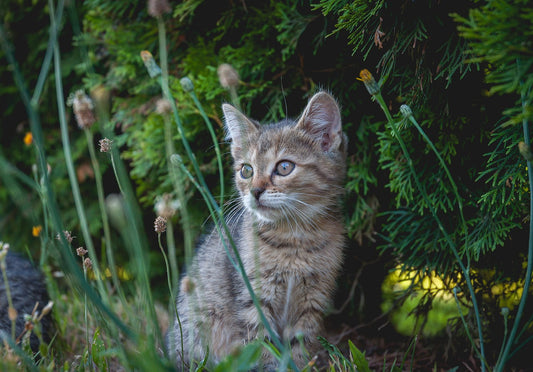
How to Tell If a Cat Has an Owner: Signs, Tips ...
This in-depth guide helps readers determine whether a wandering cat has an owner or is truly stray. It covers physical, behavioral, and environmental clues, from microchips and grooming to routine...
How to Tell If a Cat Has an Owner: Signs, Tips ...
This in-depth guide helps readers determine whether a wandering cat has an owner or is truly stray. It covers physical, behavioral, and environmental clues, from microchips and grooming to routine habits and community observations. The article also outlines legal considerations in Australia, explains what actions to take (or avoid), and dispels common myths about outdoor cats. With quotes from experts and links to relevant resources, this guide equips readers with practical, ethical steps to reunite cats with their owners or responsibly help if they're genuinely homeless.
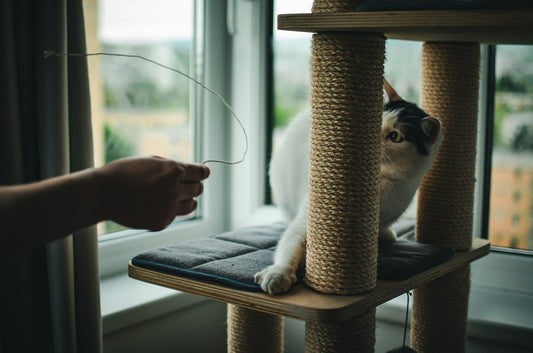
What Is the Perfect Room for Cats? Designing a ...
When it comes to living with cats, most owners focus on food, litter boxes, and the occasional toy. But what if we told you that creating the perfect room for...
What Is the Perfect Room for Cats? Designing a ...
When it comes to living with cats, most owners focus on food, litter boxes, and the occasional toy. But what if we told you that creating the perfect room for your cat could dramatically improve their health, happiness, and even your bond with them? Cats are not just ornamental roommates—they are sensitive, instinctual beings who benefit immensely from carefully designed environments. In fact, a study published in Applied Animal Behaviour Science found that enriched living spaces reduced stress-related behaviors in domestic cats by over 40%.

How To Stop Your Cat From Peeing On Your Bed An...
In order to stop and prevent your cat from peeing on the bed, first, look at your litter box situation. Make sure that it’s clean and convenient for your cat...
How To Stop Your Cat From Peeing On Your Bed An...
In order to stop and prevent your cat from peeing on the bed, first, look at your litter box situation. Make sure that it’s clean and convenient for your cat to use. As you know, cats enjoy having a clean, quiet place to do their dirty work. For one, I always try to place the litter box in a calm, low-traffic area and I scoop often. Anything soft and cushy will definitely lure in the cats. I personally prefer using covers that don’t retain odour and make sure to wash them in something like plain soap.

Do microchipped cats need collars?
Many cat owners believe microchipping eliminates the need for collars—but this assumption can be risky. In this in-depth article, we explore why both microchips and collars are essential tools in...
Do microchipped cats need collars?
Many cat owners believe microchipping eliminates the need for collars—but this assumption can be risky. In this in-depth article, we explore why both microchips and collars are essential tools in ensuring your cat’s safety and swift return if lost. While microchips are permanent and tamper-proof, they require specialized scanning. Collars, on the other hand, provide instant visual identification for good Samaritans or neighbors who may not have access to a microchip scanner. We also discuss historical insights, expert recommendations, real-world statistics, and practical tips for safely combining microchips with breakaway collars. Backed by research and enriched with rarely-discussed perspectives, this guide helps pet owners make informed decisions about protecting their feline companions.
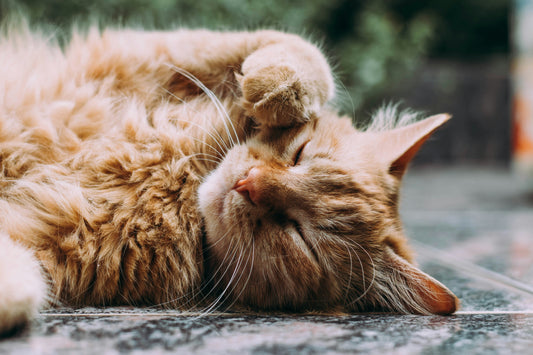
How to tell if a cat is stray?
Not every cat wandering outdoors is homeless. This article explores how to tell if a cat is stray by observing behavior, physical condition, and social cues. You'll learn to differentiate...
How to tell if a cat is stray?
Not every cat wandering outdoors is homeless. This article explores how to tell if a cat is stray by observing behavior, physical condition, and social cues. You'll learn to differentiate between feral, stray, and owned cats using real-life examples, rarely discussed signs, and expert-backed advice. The post also outlines what to do next—from scanning for a microchip to legally helping or adopting the cat in Australia. Whether you're a pet lover, rescuer, or curious neighbor, this guide offers practical, humane, and informed steps to support stray cats safely and responsibly.
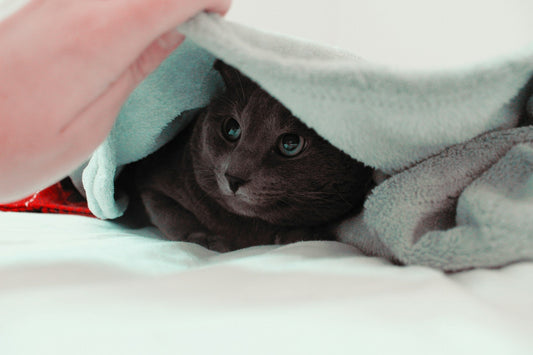
Do Cats Like to Be Covered?
"Do cats like to be covered?" is a deceptively simple question that many pet owners ask, especially when they see their cat burrow under a blanket or disappear into a...
Do Cats Like to Be Covered?
"Do cats like to be covered?" is a deceptively simple question that many pet owners ask, especially when they see their cat burrow under a blanket or disappear into a cardboard box. At first glance, it may seem like a straightforward preference. But as with many things in the feline world, the answer is nuanced — layered with evolutionary instinct, environmental influence, and individual temperament.
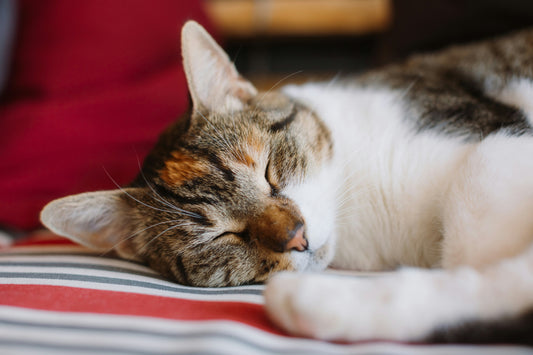
Should I take my cat's collar off at night?
This article explores whether cat owners should take off their cat’s collar at night. Backed by veterinary insights, historical references, and safety statistics, it outlines the pros and cons of...
Should I take my cat's collar off at night?
This article explores whether cat owners should take off their cat’s collar at night. Backed by veterinary insights, historical references, and safety statistics, it outlines the pros and cons of overnight collar use. It also explains which collar types are best suited for 24/7 wear and what rarely discussed risks and benefits are tied to leaving collars on while your cat sleeps. Designed for pet lovers looking to make informed, practical decisions, this comprehensive guide highlights what most pet blogs leave out.
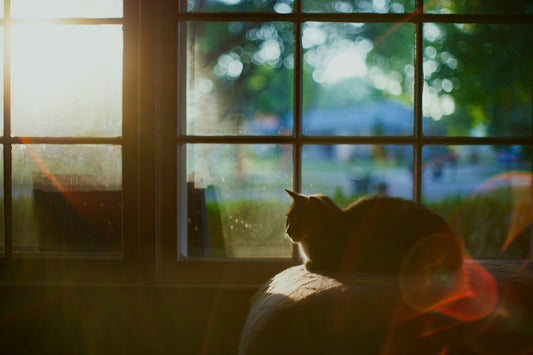
How Do I Stop a Cat Waking Me Up at 4am?
Many cat owners share the same bleary-eyed story: their cat wakes them up like clockwork at 4am, demanding food, play, or attention. While some may brush it off as "just...
How Do I Stop a Cat Waking Me Up at 4am?
Many cat owners share the same bleary-eyed story: their cat wakes them up like clockwork at 4am, demanding food, play, or attention. While some may brush it off as "just a cat thing," this early-morning ritual can lead to disrupted sleep, stress, and resentment. But why do cats wake their owners up at 4am? And more importantly, how do you stop it? In this guide, we explore feline sleep biology, evolutionary behavior, and practical solutions that go beyond the usual advice—helping both you and your cat get the restful night you deserve.
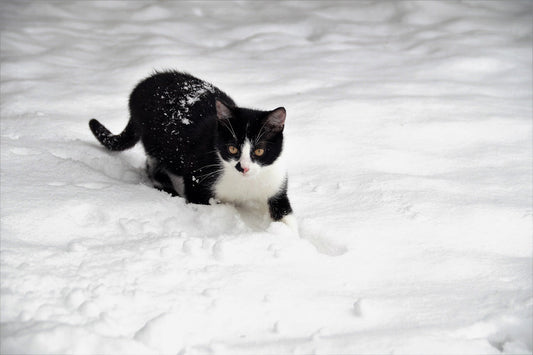
How Cold Is Too Cold for Cats?
When winter creeps in and temperatures drop, many cat owners wonder: How cold is too cold for cats? Unlike their canine counterparts, cats are more subtle in expressing discomfort, often...
How Cold Is Too Cold for Cats?
When winter creeps in and temperatures drop, many cat owners wonder: How cold is too cold for cats? Unlike their canine counterparts, cats are more subtle in expressing discomfort, often quietly seeking warmth or hiding away. Despite their fur coats, most cats are not built for freezing temperatures—especially those that spend time outdoors. This article unpacks how cold is too cold for cats by examining scientific, historical, and practical aspects. We'll discuss different risk factors, how to protect cats in cold climates, and ways to recognize when your feline friend is simply too cold.
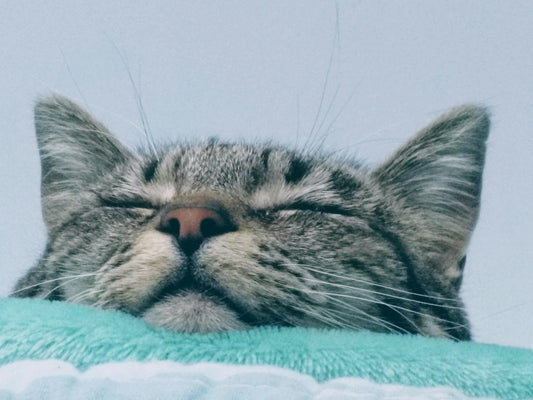
How to Train a Cat to Sleep Alone?
Training a cat to sleep alone can feel like a challenging task, especially when your feline companion has grown accustomed to sharing your bed or curling up beside you on...
How to Train a Cat to Sleep Alone?
Training a cat to sleep alone can feel like a challenging task, especially when your feline companion has grown accustomed to sharing your bed or curling up beside you on the couch at night. Whether you’re considering your own comfort, allergies, or simply aiming to foster a healthy sleeping routine for your pet, this guide explores how to train a cat to sleep alone—gently, effectively, and with your cat’s well-being at heart.
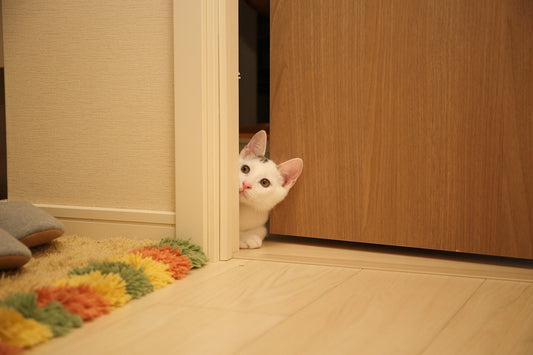
Should I Close the Door on My Cat at Night?
The question "Should I close the door on my cat at night?" might seem simple, but it opens up a complex discussion about feline behavior, emotional health, and household dynamics....
Should I Close the Door on My Cat at Night?
The question "Should I close the door on my cat at night?" might seem simple, but it opens up a complex discussion about feline behavior, emotional health, and household dynamics. Whether you're a light sleeper, have allergies, or are simply trying to establish boundaries, understanding your cat's needs and instincts is essential before making this decision. This article explores the implications of closing the door on your cat at night, drawing from historical context, behavioral science, and practical pet care experience to help you make an informed, compassionate choice.

Do Cats Miss Their Owners?
Cats are often perceived as independent, aloof, and emotionally distant creatures. Unlike dogs, they don't jump with joy when you walk through the door—at least, not in the same overt...
Do Cats Miss Their Owners?
Cats are often perceived as independent, aloof, and emotionally distant creatures. Unlike dogs, they don't jump with joy when you walk through the door—at least, not in the same overt way. This raises a question many cat owners ponder when away from home: Do cats miss their owners? This article explores the scientific, emotional, and historical aspects of feline behavior to answer this question in depth. We’ll look at research findings, behavioral cues, emotional signs, and ways to ensure your cat feels secure even in your absence.
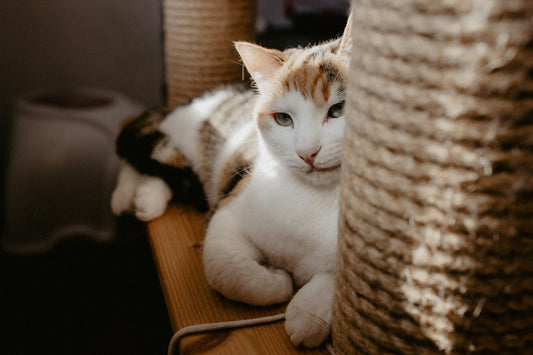
Can I Shut My Cat in a Room at Night?
For many cat owners, nighttime becomes a battleground between the need for sleep and the unpredictable energy of a nocturnal feline. The question often arises: Can I shut my cat...
Can I Shut My Cat in a Room at Night?
For many cat owners, nighttime becomes a battleground between the need for sleep and the unpredictable energy of a nocturnal feline. The question often arises: Can I shut my cat in a room at night? This common query reflects both the love people have for their cats and their need for a good night's rest. In this article, we explore this issue in depth—factoring in feline psychology, safety, history, and modern recommendations—so you can make a decision that's best for both you and your cat.
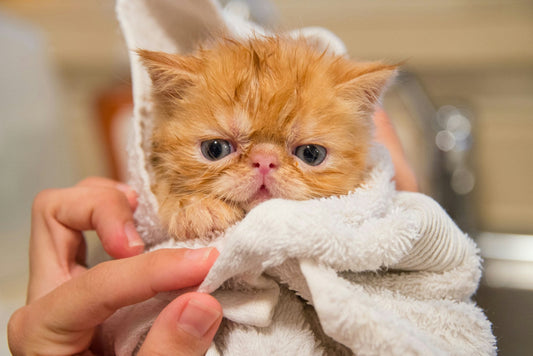
Do Cats Need Baths?
If you've ever attempted to bathe a cat, you likely remember it well. But should you even be doing it in the first place? “Do cats need baths?” is a...
Do Cats Need Baths?
If you've ever attempted to bathe a cat, you likely remember it well. But should you even be doing it in the first place? “Do cats need baths?” is a question that has perplexed both new and seasoned cat owners. While some believe cats are self-cleaning marvels, others argue that a bath is sometimes essential for their health and hygiene. The truth lies in a deeper understanding of feline behavior, coat types, health conditions, and lifestyle factors.
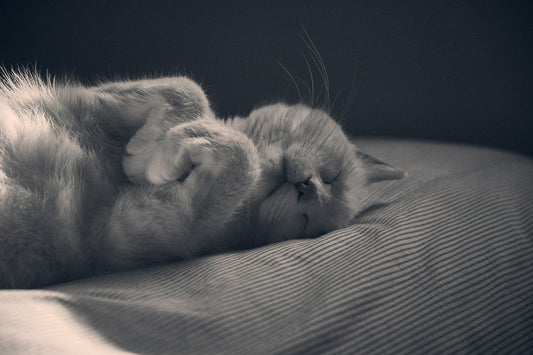
Is It Hygienic for a Cat to Sleep in Your Bed?
It’s bedtime. Your cat jumps up beside you, purring softly, curling up on your legs or pillow, ready to drift into slumber. For millions of pet owners, this is a...
Is It Hygienic for a Cat to Sleep in Your Bed?
It’s bedtime. Your cat jumps up beside you, purring softly, curling up on your legs or pillow, ready to drift into slumber. For millions of pet owners, this is a comforting routine. But the question arises: Is it hygienic for a cat to sleep in your bed? The answer isn’t as simple as “yes” or “no.” While the emotional benefits of sharing your bed with a feline companion are well-documented, the hygienic implications are complex.
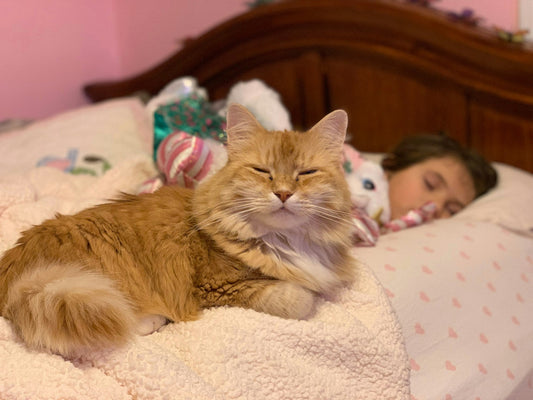
Is It Okay to Let a Cat Sleep on Bed?
The Ultimate Guide to Understanding the Impacts of Sharing Your Bed with a Cat Table of Contents Introduction A Brief History of Cats Sleeping with Humans Understanding Cat Sleeping Behavior...
Is It Okay to Let a Cat Sleep on Bed?
The Ultimate Guide to Understanding the Impacts of Sharing Your Bed with a Cat Table of Contents Introduction A Brief History of Cats Sleeping with Humans Understanding Cat Sleeping Behavior Why Cats Love Sleeping on Beds Pros of Letting a Cat Sleep on Your Bed Cons of Letting a Cat Sleep on Your Bed Things to Consider Before Letting Your Cat Sleep on Your Bed Expert Tips for Co-Sleeping with Your Cat Safely What If You Decide Not to Let Your Cat Sleep on Your Bed? Conclusion References Introduction Many cat owners have found themselves faced with a sleepy feline curled up on their bed, looking far too comfortable to move. But the question remains: Is it okay to let a cat sleep on bed? For some, it’s a comforting nightly routine. For others, it raises concerns about hygiene, sleep disruption, or health. In this comprehensive article, we’ll explore the facts, fiction, and frequently overlooked insights around letting your cat share your sleeping space. A Brief History of Cats Sleeping with Humans The practice of cats sleeping with humans is not a modern phenomenon. In fact, archaeological findings reveal that domesticated cats have been sleeping alongside humans for thousands of years. A 9,500-year-old grave discovered in Cyprus featured a human buried next to a cat, suggesting the long-standing companionship between the two species (source). In ancient Egypt, cats were revered and often lived in close quarters with people—sometimes even mummified and buried with their owners. Fast forward to medieval Europe, cats were valued for their ability to keep bedding areas free from rodents. Their presence in the bedroom has long been both functional and emotional. Understanding Cat Sleeping Behavior Cats sleep an average of 12 to 16 hours a day, with some sleeping up to 20 hours, especially kittens and seniors. Their sleep is distributed in bursts, and they are crepuscular, meaning they’re most active at dawn and dusk. This pattern can conflict with human sleep cycles, but cats are incredibly adaptable creatures. They tend to choose sleeping spots that are: Warm Quiet Elevated Near their trusted humans Letting a cat sleep on your bed satisfies many of these preferences. Why Cats Love Sleeping on Beds There are several reasons why your cat may prefer your bed over its own: Warmth: Your body heat and blankets provide a cozy environment. Security: Being close to you makes your cat feel safe. Bonding: Sleeping together strengthens the social bond. Territorial Affection: Cats often mark their territory by sleeping in shared spaces. "A cat’s favorite sleeping spot often reflects their trust in you. If they choose your bed, they’re choosing you." – Dr. Rachel Geller, Cat Behaviorist Pros of Letting a Cat Sleep on Your Bed Let’s look at the benefits that aren’t often talked about in mainstream pet advice: 1. Emotional Comfort and Stress Reduction Research shows that sleeping with a pet can reduce stress and anxiety levels. The presence of a cat may help people fall asleep faster and feel more secure. According to a study by the Mayo Clinic, 41% of pet owners reported sleeping better because of their pets (source). 2. Strengthened Human-Pet Bond Nightly snuggles enhance trust and deepen emotional connections between cats and their humans, reinforcing social bonds that can lead to better behavior. 3. Therapeutic Value for Children and Elderly The companionship of a cat during sleep can offer a sense of routine and emotional balance for children and the elderly, especially those with anxiety or living alone. 4. Reduced Feelings of Loneliness A quiet cat at your feet can be more comforting than you might expect. For those experiencing loneliness or isolation, this can make a profound difference. Cons of Letting a Cat Sleep on Your Bed While the benefits are appealing, there are valid reasons to pause and consider the risks. 1. Sleep Disturbance Cats are light sleepers and may: Roam during the night Groom noisily Jump on and off the bed Wake you up early 2. Allergies and Hygiene Issues Cat dander, fur, and occasional litter residue can make your bed less sanitary. For those with allergies or asthma, this could exacerbate symptoms. 3. Parasites or Zoonotic Diseases Although indoor cats are generally safe, they can still carry fleas, mites, or pathogens like Toxoplasma gondii. Regular vet visits and parasite control are essential. 4. Behavioral Dependency Cats that become dependent on sleeping with you may struggle with separation anxiety when you’re away. Things to Consider Before Letting Your Cat Sleep on Your Bed Ask yourself these questions: Does my cat have any medical or behavioral issues that might interrupt my sleep? Am I allergic to cat dander or sensitive to fur? Is my bedding washable and resistant to fur and allergens? Does my cat have access to a litter box at night? Also consider: Your own sleep quality: Light sleepers may find it difficult to adjust. Your lifestyle: If you travel frequently, your cat may struggle with inconsistency. Expert Tips for Co-Sleeping with Your Cat Safely If you choose to share your bed, here are ways to do it responsibly: Brush your cat daily to minimize shedding Wash your bedding frequently Use hypoallergenic mattress covers Create boundaries (e.g., no face snuggling, designated sleep spots) Ensure flea and parasite control is up to date Keep a scratching post nearby to prevent nighttime furniture damage “Cats don’t need the entire bed to feel close. A small fleece-lined basket placed on the corner of the bed can help establish boundaries.” – Dr. Mikel Maria Delgado, Certified Cat Behavior Consultant What If You Decide Not to Let Your Cat Sleep on Your Bed? If you choose to keep bedtime separate, it’s important to provide an alternative that’s just as appealing: Recommended Solutions: Heated Cat Beds: Mimics your body heat Cat Window Beds: Combines elevation and security High-Sided Beds: Offers comfort and insulation Outdoor Dog Beds for Cats: Durable, water-resistant, and great for covered patios or verandas At PetCareShed, we offer several alternatives that are perfect for cats who prefer their own space or need to transition off the bed. Our outdoor dog beds are especially popular for multi-pet households in Australia—they're easy to clean, elevated for airflow, and durable enough for daily use. 👉 Browse Our Best-Selling Pet Beds in Australia Conclusion So, is it okay to let a cat sleep on bed? The answer depends on your lifestyle, health, and sleep preferences. For many, the emotional rewards far outweigh the occasional inconvenience. With thoughtful preparation and a bit of structure, co-sleeping with your cat can be a safe and deeply comforting experience. Ultimately, whether your cat curls up by your pillow or lounges in their own plush bed nearby, what matters most is that both of you are happy, healthy, and well-rested. References National Geographic – History of Cat Domestication Mayo Clinic Study on Pet Co-Sleeping Sleep Foundation – Sleeping With Pets International Cat Care – Safe Sleeping Tips PetMD – Why Do Cats Sleep So Much?
